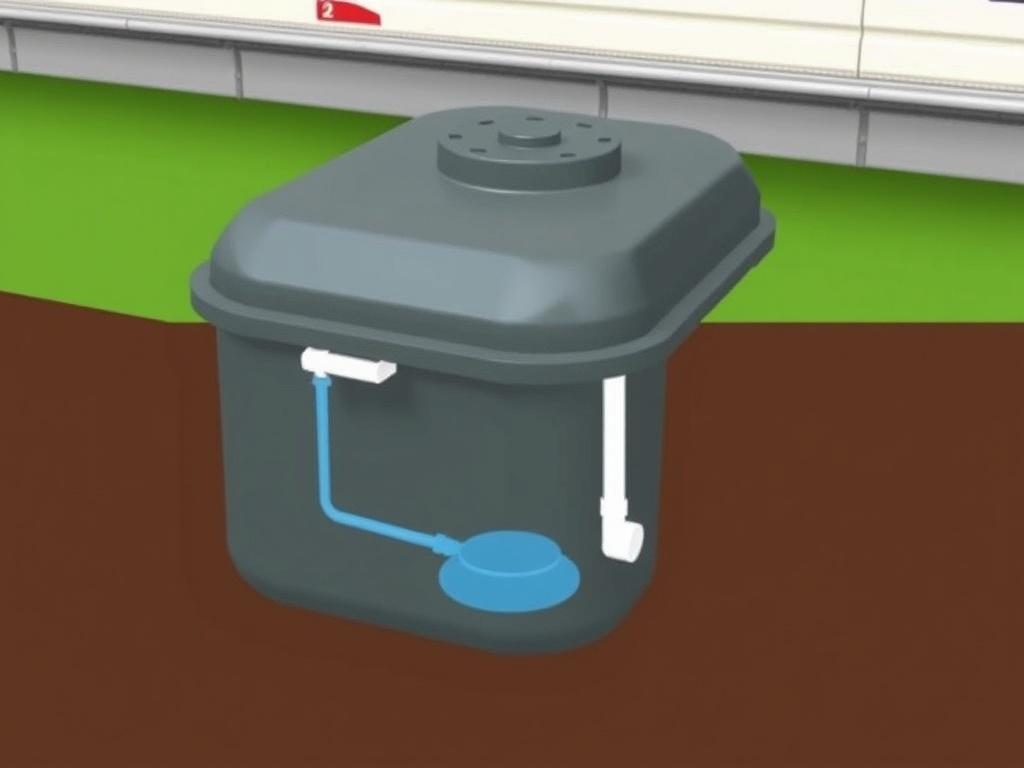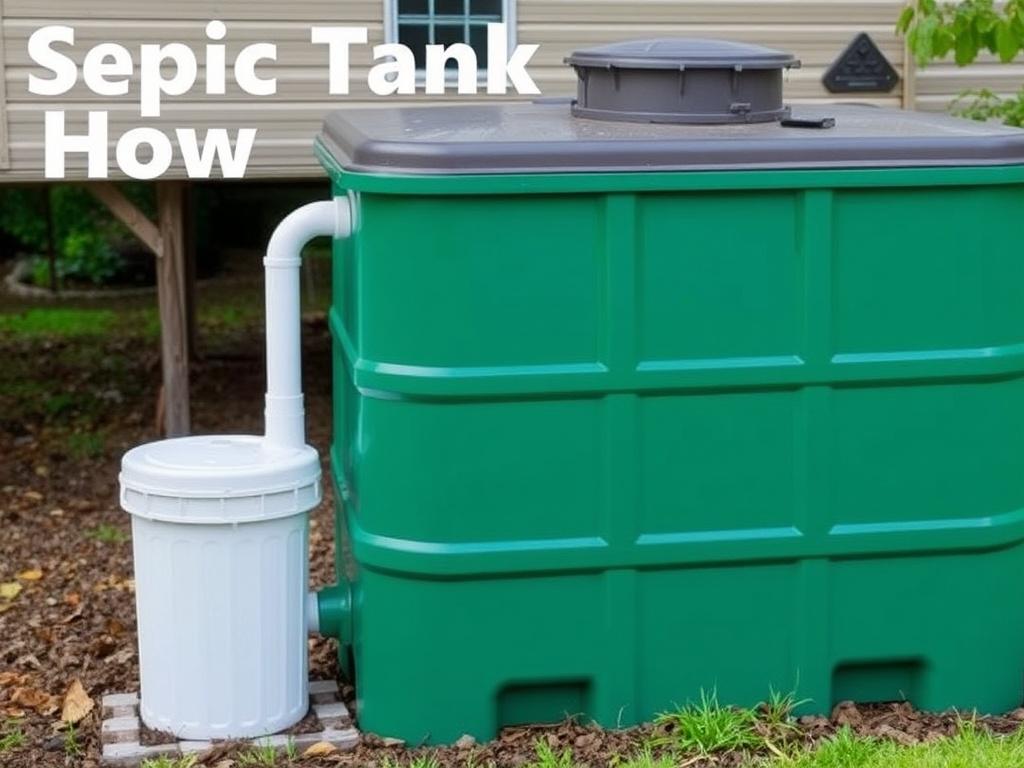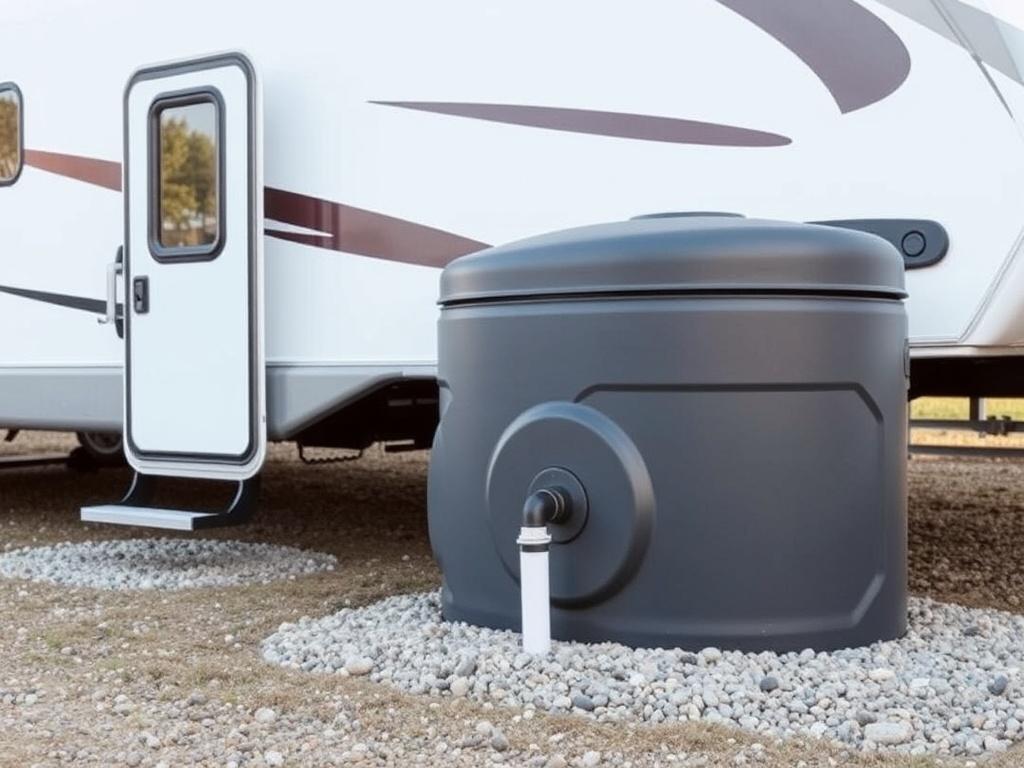When you’re living the RV life, enjoying the open road and the freedom of your home on wheels, managing waste safely and efficiently is a top priority. One of the most crucial components that often goes unnoticed but plays a vital role in your RV experience is the septic tank system. Understanding how a septic tank for RV works, the benefits it brings, and how to maintain it can save you from messy situations and keep your mobile home comfortable and hygienic. This article dives deep into the world of septic tanks for RVs, exploring how they function, what makes them different from residential septic systems, and practical tips to keep yours working seamlessly.
- What is a Septic Tank for an RV?
- How Does an RV Septic Tank Work?
- Important Components of an RV Septic Tank System
- Differences Between RV Septic Tanks and Residential Septic Systems
- Maintaining Your RV Septic Tank System
- Regular Dumping
- Use RV-Friendly Chemicals
- Inspect and Clean Vents
- Monitor Water Usage
- Regular Tank Inspection
- Common Problems with RV Septic Tanks and How to Solve Them
- The Environmental Impact of RV Septic Systems
- DIY vs. Professional Septic Tank Service in RVs
- Tips for Choosing the Right Septic Tank System for Your RV
- Innovations and Future Trends in RV Septic Tank Technology
- Summary Table: Pros and Cons of Having a Septic Tank System in Your RV
- Conclusion
What is a Septic Tank for an RV?
At its core, a septic tank for an RV is a small-scale wastewater treatment system designed to collect and break down sewage and wastewater from your RV’s bathroom, kitchen, and other water fixtures. Unlike a traditional home septic tank, which is buried underground with complex plumbing, the RV septic system is usually portable or integrated within the vehicle, making it specially adapted for a mobile lifestyle.
The sewage leaves the RV’s plumbing system and enters the septic tank, where solids settle to the bottom, and liquids or effluents flow out to a designated disposal area or holding tank. The septic tank provides a safe containment zone where organic matter gets partially broken down by bacteria before the waste is properly disposed of.
How Does an RV Septic Tank Work?
Understanding how a septic tank for an RV works involves breaking down its components and the waste treatment process. Here is a simplified overview of what happens inside the tank:
- Intake: Sewage and wastewater from your RV’s toilet, shower, and sink flow into the tank through inlet pipes.
- Separation: Inside the tank, the waste separates naturally. Solids, such as feces and toilet paper, sink to the bottom forming sludge, while lighter components like fats and oils float to the top as scum.
- Decomposition: Anaerobic bacteria within the tank break down the solid waste slowly, reducing the volume of sludge over time.
- Effluent Outflow: The relatively clear liquid between the sludge and scum layers exits the tank through an outlet pipe, usually leading to a holding tank or a dump station where it can be disposed of safely.
This process allows for sanitation and minimizes odors and environmental hazards, important for RVers who frequently move between campsites or remote locations without standard sewer hookups.
Important Components of an RV Septic Tank System
To fully grasp how the septic system works in your RV, it helps to know the major parts involved:
| Component | Function |
|---|---|
| Wastewater Inlet Pipes | Carry sewage from the RV plumbing into the septic tank. |
| Septic Tank | Primary container where solids settle and breakdown occurs. |
| Vent Pipes | Allow gases produced by decomposition to escape safely. |
| Effluent Outlet | Channels treated liquid waste to a holding tank or disposal site. |
| Holding Tank (if separate) | Stores liquid waste until it can be emptied at a dump station. |
Many modern RVs combine the septic system with a holding tank instead of discharging waste directly, which enhances convenience and environmental safety.
Differences Between RV Septic Tanks and Residential Septic Systems

While residential and RV septic tanks operate on the same principles, their design and usage differ significantly due to mobility and space constraints.
- Size and Capacity: RV septic tanks are much smaller, built to handle waste from two to four people temporarily, unlike permanent residential tanks designed for entire households.
- Mobility: RV tanks are designed to handle the dynamic environment of travel, including vibrations, tilting, and varying climates.
- Waste Disposal: RV septic tanks often require manual dumping at designated dump stations, whereas residential tanks typically release treated effluent into a drain field.
- Material: RV tanks are usually made of lightweight plastics to reduce vehicle weight, whereas home septic tanks are commonly concrete or heavy-duty plastic.
Because of these differences, RV owners must be particularly mindful of tank management, cleaning, and disposal methods on the road.
Maintaining Your RV Septic Tank System
Proper care of your septic tank for RV is essential to avoid unpleasant backups, foul odors, and potential damage to your vehicle. Here are key maintenance tips to ensure your system remains functional:
Regular Dumping
No matter how well-designed, the tank will fill up quickly if not emptied regularly. Always plan your trips around access to approved dump stations. Waiting too long can cause the tank to overflow or clog your RV plumbing.
Use RV-Friendly Chemicals
Avoid household drain cleaners or harsh chemicals that can kill the beneficial bacteria breaking down the waste. Specialized RV-safe toilet treatments help control odors and promote healthy bacterial action in your septic tank.
Inspect and Clean Vents
Vent pipes prevent dangerous gases from accumulating and help maintain air pressure inside the tank. Inspect vents regularly for blockages or damage to avoid leaks or odors inside your RV.
Monitor Water Usage
Efficient water management reduces strain on your septic system. Using less water cuts down the volume of liquid waste, preventing the tank from filling too quickly and assisting the bacterial digestion process.
Regular Tank Inspection
Visually inspecting the tank for cracks or leaks during routine maintenance ensures structural integrity. Look out for unusual smells, slow drains, or toilet backups, which may signal tank or plumbing issues.
Common Problems with RV Septic Tanks and How to Solve Them

Even with the best care, you might face some challenges managing an RV septic tank system. Here are a few common problems and practical solutions:
- Tank Odors: Persistent smells can result from clogged vents or overloaded tanks. Check and clear vents, use RV-safe treatments, and dump tanks frequently.
- Slow Drains or Backups: Generally caused by blocked outlet pipes or excessive solids. Avoid flushing non-degradable items and consider using enzyme treatments to maintain clear pipes.
- Leaks or Cracks in the Tank: If you notice wet spots under the RV or unusual odors, inspect the tank quickly. Small leaks may be repairable with sealants, but severe damage might require professional replacement.
- Frozen Tanks: For those RVers camping in cold climates, frozen wastewater can damage the tank. Use insulated covers and antifreeze treatments designed for RV tanks to prevent freezing.
Being proactive with maintenance and handling problems early will keep your septic system functioning smoothly.
The Environmental Impact of RV Septic Systems
As RVing grows in popularity, understanding the ecological side of septic tanks in mobile environments matters. Proper septic tank management helps prevent harmful bacteria and chemicals from entering ground and surface water sources, protecting ecosystems.
Environmentally responsible disposal at approved dump stations ensures that waste is processed safely by municipal systems or specialized treatment plants. Many campsites and parks provide easily accessible facilities designed to protect the environment.
DIY vs. Professional Septic Tank Service in RVs
While routine care is best handled by the RV owner, some maintenance tasks are better left to professionals:
| Task | DIY | Professional Service |
|---|---|---|
| Routine Tank Dumping | Yes, usually easy and safe to do at dump stations. | Not typically required. |
| Tank Flushing/Cleaning | Can be done carefully with proper knowledge. | Recommended annually or if tank clogs occur. |
| Leak Repair or Replacement | Risky due to tank location; generally avoid. | Professional assessment and repair advised. |
| Septic System Inspection | Basic visual checks DIY; detailed inspection requires skill. | Experts provide thorough diagnostics and solutions. |
Trusting professionals with complex repairs ensures safety and longevity of your RV’s septic system.
Tips for Choosing the Right Septic Tank System for Your RV

When shopping for an RV or upgrading your wastewater system, consider these key factors:
- Tank Capacity: Match your usual number of travelers and trip length to tank size to avoid constant dumping.
- Material Durability: Look for high-quality, lightweight materials that resist corrosion and damage.
- Ease of Access: Tanks with accessible ports or flush valves make cleaning and dumping easier.
- Compatibility with Your RV Setup: Ensure the system integrates smoothly with your vehicle’s plumbing and layout.
- Odor Control Features: Some systems include enhanced sealing or venting to reduce smell.
Assessing these variables helps you invest in a system that improves your RVing experience and minimizes hassle.
Innovations and Future Trends in RV Septic Tank Technology
As technology advances, septic tanks and wastewater treatment systems for RVs continue to improve. Some exciting trends to watch include:
- Smart Monitoring Systems: Sensors that track tank levels and alert you when dumping is needed.
- Biodegradable and Eco-Friendly Treatments: Natural additives that boost bacterial breakdown without harmful chemicals.
- Compact Waste Treatment Units: New miniaturized systems that treat waste on board, potentially eliminating the need for dumping.
- Improved Ventilation: Enhanced designs to fully neutralize odors and reduce gas emissions.
These innovations aim to make septic tank maintenance easier, reduce environmental footprints, and enhance hygiene for RV owners.
Summary Table: Pros and Cons of Having a Septic Tank System in Your RV
| Pros | Cons |
|---|---|
| Enables off-grid living and travel freedom. | Requires regular maintenance and proper disposal. |
| Controls odors and prevents environmental contamination. | Small tank size means frequent emptying on longer trips. |
| Keeps your RV sanitary and comfortable for occupants. | Possible damage from leaks or freeze in cold weather. |
| Relatively easy to use with access to proper facilities. | Installation or repair can be costly or complex. |
Conclusion
A septic tank for RVs plays a vital role in enabling a clean, convenient, and environmentally responsible mobile lifestyle. By understanding how these systems work, recognizing their unique challenges, and committing to regular maintenance, RV owners can avoid many common issues and enjoy the freedom of traveling without sacrificing comfort. Whether you’re a weekend camper or a full-time RVer, choosing the right septic tank system, using RV-safe products, and emptying your tanks properly at dump stations are key to a hassle-free experience on the road. With evolving technology and smarter designs, RV septic tanks are becoming more efficient and easier to manage, promising even better support for your adventures in the future. Embrace your septic system as an essential companion to your journey, and it will help keep your RV life fresh, safe, and truly enjoyable.
Помогла вам статья?






